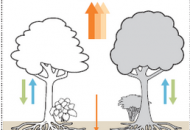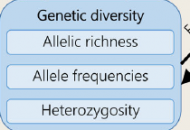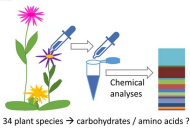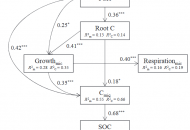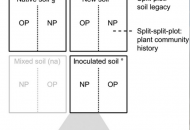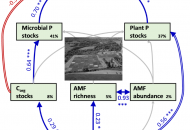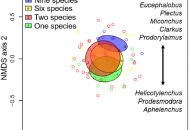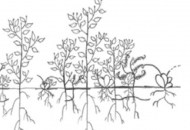Publication
-
New publication from Eisenhauer et al. in Science China Life Sciences: The shape that matters: how important is biodiversity for ecosystem functioning?
This article summarized the history and current biodiversity-ecosystem functioning research. It shows that lately study by Bongers et al. 2021 contributes a significant aspect to this field of research. It…
-
New publication from Eisenhauer et al. in Science: Ecosystem effects of environmental extremes
Climate and biodiversity change influence carbon, water, and greenhouse gas dynamics, thereby driving the delicate balance of ecosystems as carbon sinks or sources. On page 1514 of this issue, Werner…
-
New publication from Schielzeth et al. in American Journal of Botany: Community genomics: a community-wide perspective on within-species genetic diversity
It is increasingly being recognized that diversity within species constitutes another important component of biodiversity with consequences for ecosystem functioning (Raffard et al., 2019; Stange et al., 2021). Intraspecific genetic variation provides…
-
New publication from Venjakob et al. in Plant Biology: Variation in nectar quality across 34 grassland plant species
Floral nectar is considered the most important floral reward for attracting pollinators. It contains large amounts of carbohydrates besides variable concentrations of amino acids and thus represents an important food…
-
New publication from Prommer et al. in Global Change Biology: Increased microbial growth, biomass, and turnover drive soil organic carbon accumulation at higher plant diversity
Species‐rich plant communities have been shown to be more productive and to exhibit increased long‐term soil organic carbon (SOC) storage. Soil microorganisms are central to the conversion of plant organic…
-
New publication from Schmid et al. in Journal of Ecology: Effects of plant community history, soil legacy and plant diversity on soil microbial communities
Plant and soil microbial diversities are linked through a range of interactions, including the exchange of carbon and nutrients but also herbivory and pathogenic effects. Over time, associations between plant…
-
New publication from Oelmann et al. in Nature Communications: Above- and belowground biodiversity jointly tighten the P cycle in agricultural grasslands
Experiments showed that biodiversity increases grassland productivity and nutrient exploitation, potentially reducing fertiliser needs. Enhancing biodiversity could improve P-use efficiency of grasslands, which is beneficial given that rock-derived P fertilisers…
-
New publication from Dietrich et al. in Oecologia: Effects of plant species diversity on nematode community composition and diversity in a long-term biodiversity experiment
Diversity loss has been shown to change the soil community; however, little is known about long-term consequences and underlying mechanisms. Here, we investigated how nematode communities are affected by plant…
-
New publication from Roeder et al. in Journal of Ecology: Plant diversity effects on plant longevity and their relationships to population stability in experimental grasslands
Identifying to what degree inherent characteristics of plant species and their variation in response to their environment regulate the temporal stability of plant populations is important to understand patterns of…
-
New publication from Dietrich et al. in Ecology and Evolution: Plant history and soil history jointly influence the selection environment for plant species in a long‐term grassland biodiversity experiment
Long‐term biodiversity experiments have shown increasing strengths of biodiversity effects on plant productivity over time. However, little is known about rapid evolutionary processes in response to plant community diversity, which…
Posts navigation
We’ve made the move from Twitter to Bluesky. Follow us there for all the latest updates.


